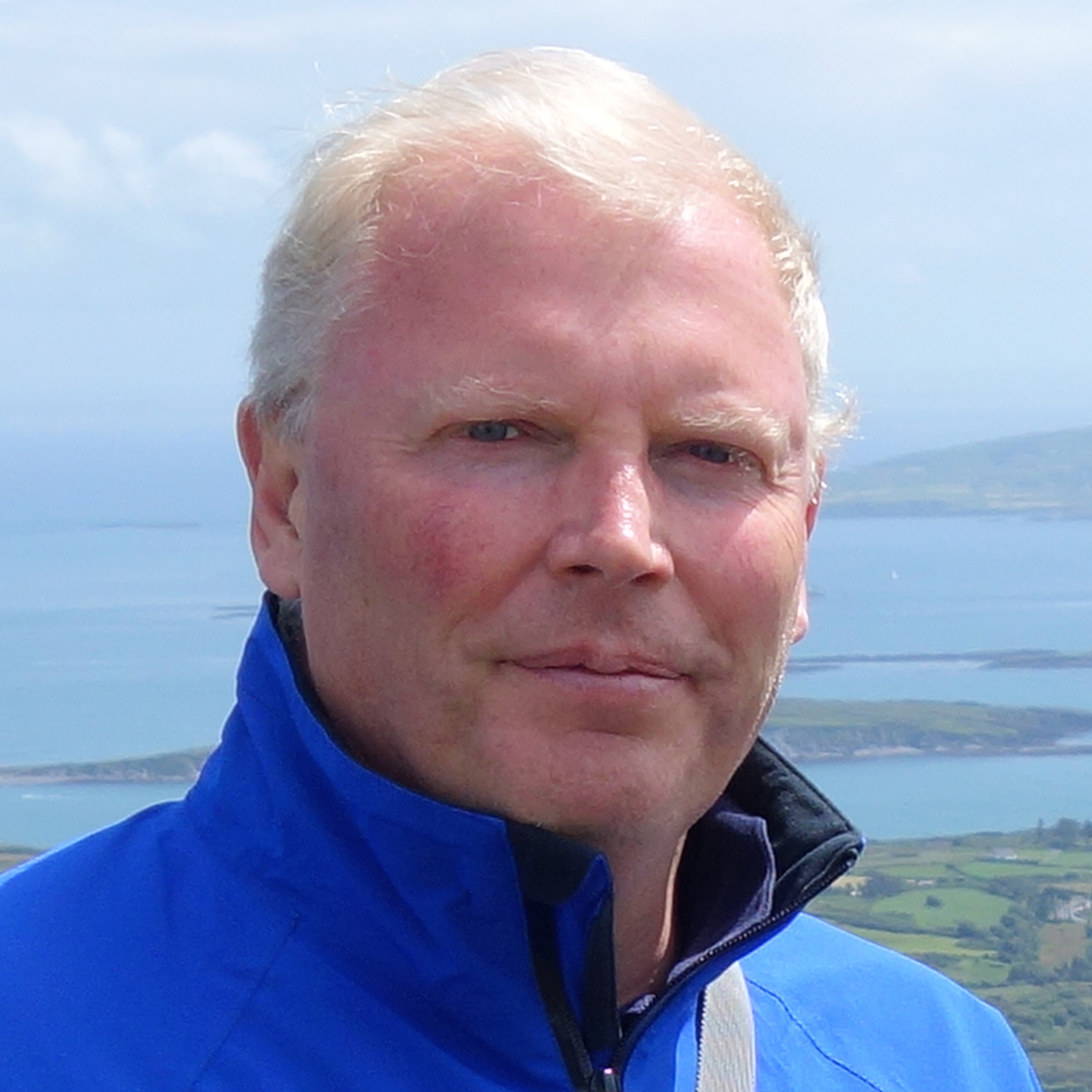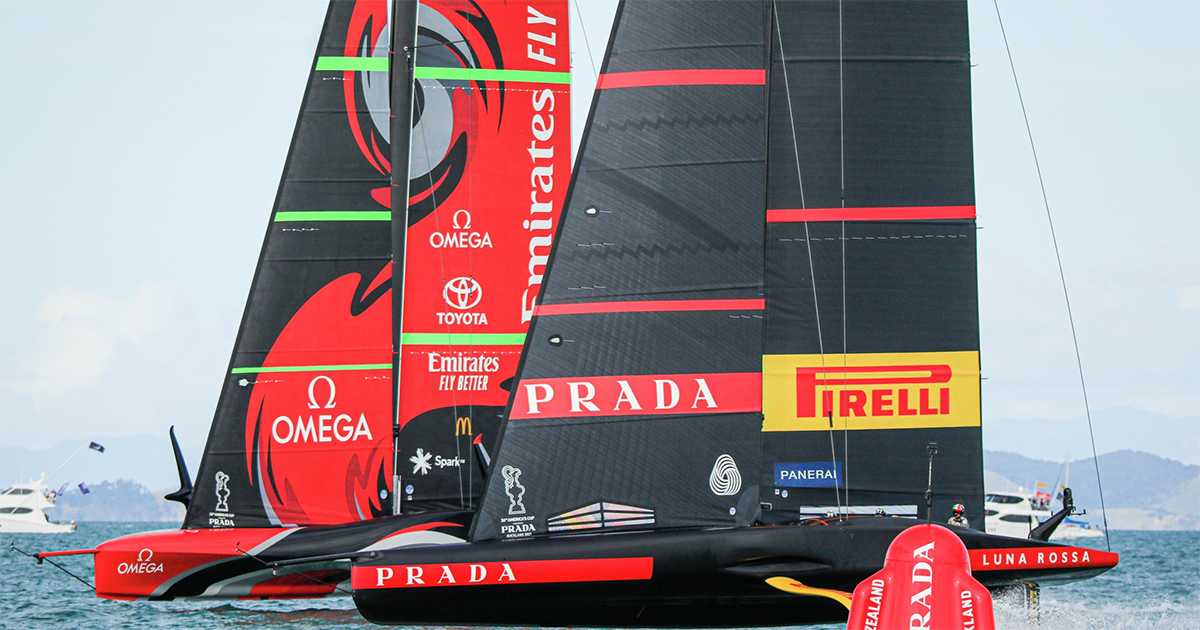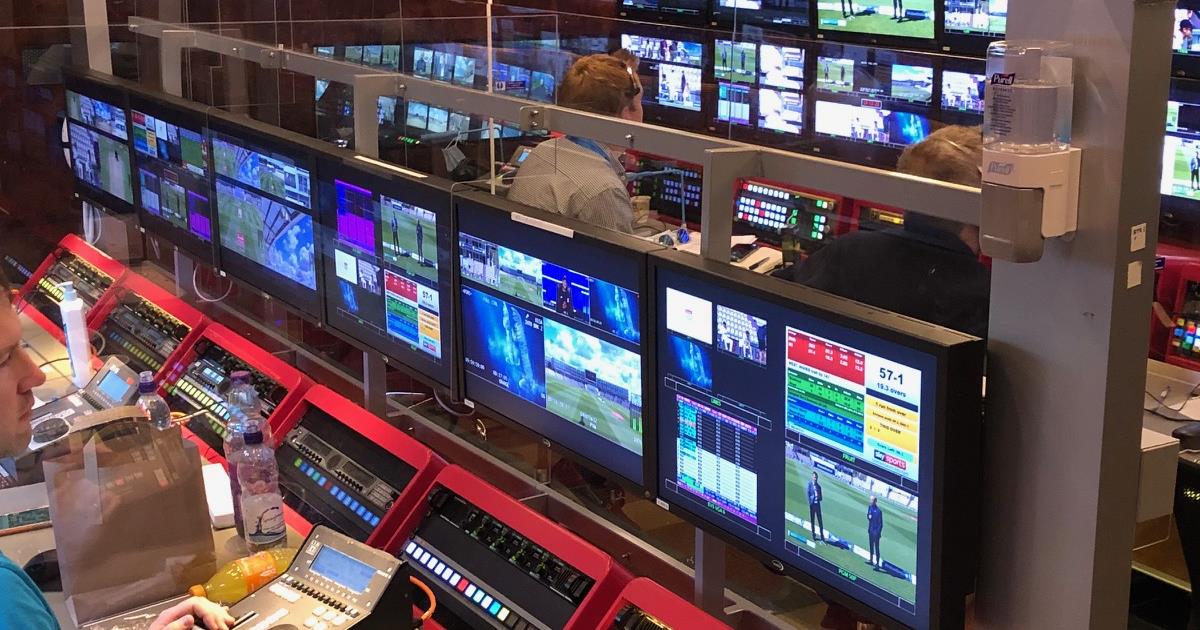By David Fox
The America’s Cup is the oldest international sporting trophy, having first been won by the schooner America in 1851. Today, as yachts from Italy and the holders, New Zealand, compete for the 36th America’s Cup, it is very much a high-tech event, and the broadcast infrastructure reflects that.
The 36th America’s Cup Match is taking place March 6-15 in Auckland, New Zealand, and sees the defender Emirates Team New Zealand racing against the winner of the PRADA Cup, the Challenger Selection Series, with the winner being the first team to score seven points.
Coverage of the racing can be viewed on NBC Sports in the US; the BBC and Sky in the UK; TSN, Canada; ESPN in Latin America and the Caribbean; TVNZ, New Zealand; TV12 and C More in Sweden; Canal+ in France, Switzerland and French territories; Servus TV in Germany, Austria and Switzerland; and DAZN in Japan. European Broadcasting Union members can access live, long-form and short-form highlights via the Eurovision News Exchange. It is also on various social media platforms.
This year the production is helmed by circle-o, a joint venture between West4Media and Riedel Communications, with at least 10 cameras on each of the 75-foot AC75 hydrofoil monohulled yachts as they race at speeds of up to about 50 knots (almost 60 mph). Almost every camera in use is wireless, but the area covered by the five possible racecourses is vast, so communications are key.
For the finals the camera count rises to 12 on each yacht, with the three remote-controlled PTZ cameras and seven fixed cameras joined by a 360-degree camera on the top of the mast and a body-worn unit on the helmsman’s shoulder, as he is the only one that has to scoot across the boat as it changes course, to add an action shot that wasn’t available in the earlier challenger races.
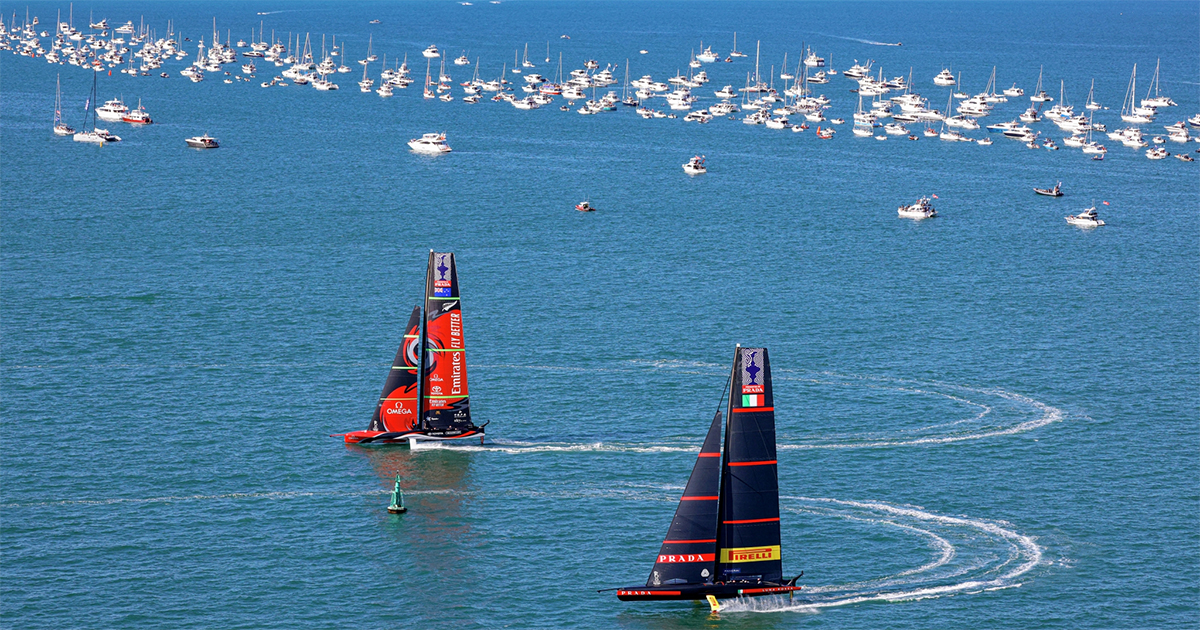
The pan/tilt/zoom cameras were designed especially for the Cup by BR Remote in the UK, and can be sprayed and cleaned from the main production room. There are three fixed Dreamchip cameras in each of the two cockpits showing the grinders or the helmsman.
The seventh fixed camera at the front of the boats, giving the bowsprit shot, shows the boats flying and foiling. The 360-degree camera isn’t for live coverage, but is recorded on the boat and is used for post-production and for producing 360-degrees snippets for the exclusive social media platforms after the race, like YouTube, and americascup.com.
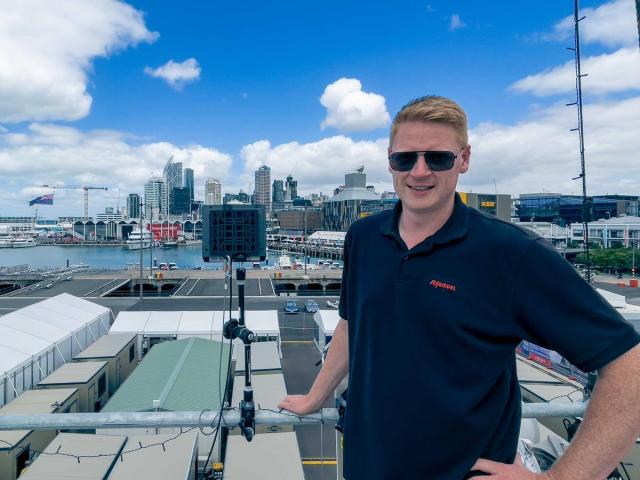
“We are receiving at the same time four cameras from each boat,” explained Tim Puschkeit, Technical Director, Riedel. “We can remote control which camera we put on air or we can cut. So we have four T Extremes permanently on each boat and we can even cut the signals on each stream live on air, which gives the director and producer a bit more flexibility because we don’t need to run it through the vision mixer.”
Besides the cameras, there are eight specially developed water- and windproof onboard microphones as well as headsets, developed for the event by Sennheiser, and for communications each boat has at least four Riedel Bolero wireless intercom belt packs.
“On top of this we have the whole RMS [race management system] infrastructure on the boats that is also integrated in the media system that for example provides all the data as regards heading, speed and GPS,” added Puschkeit.
This allows the umpires to see if there is an early start line cross or a yacht crossed the race boundary. There are also such accessories as little message displays or penalty buttons for protests on the boats which all linked together.
Race Boats Are Too Fast to Enable Drone Coverage
In order to deliver all the feeds, including a multiviewer preview of every camera, Riedel designed a custom case based on its Mediornet real-time media network and MicroN media distribution and processing systems. “We have two MicroNs in use there, which are dehoused and are customized built in a waterproof case. Due to temperature, we are cooling the Mediornet, the MicroNs, with a water cooling system, with heat pipes and thermal exchange plates,” explained Puschkeit.
To cope with all the data, the transmission unit in a white radome on the masthead is a custom build designed by Riedel and made by Vienna-based Pidso, which also provides the yacht’s radar system for sophisticated measurement data gathering, such as distances between the AC75’s as well as their altitude from water surface. The radome not only transmits the video link in the three GHz range, but also in parallel a mesh network in the two gig range for data.
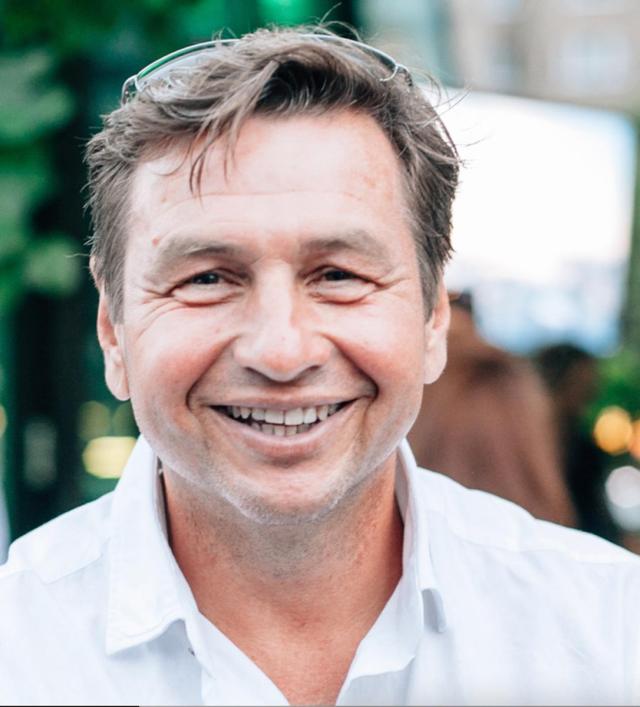
That data is “fed into the race management system, the system where the race is measured, and where all of the umpires are checking the race, and it’s also fed into the graphics and into some 3D feeds that we are producing,” said circle-o CEO Werner Eksler. Although his main output is the two world feeds (standard and compliant — with/without some advertising), there are also three streaming feeds.
“One of them is a data feed, a 3D feed, where you can see all of this data,” which is also displayed in an app. The data feed also combines elements from the other two feeds (one from each yacht) and “is more a feed for the sailing expert who really wants to see how they act,” he explained.
The mesh network, which was built with DTC Broadcast and is completely isolated from other infrastructure, is also used for comms. “We also use it for all other devices on the water, like the camera chase boats or the helicopters and also through that network link we stream Bolero through IP to have an on-water reporter on the camera chase boat or a helicopter,” said Puschkeit.
Some of the data from the yachts is used for the augmented reality graphics displayed on screen, such as speeds or the VMG (velocity made good, boat speed taking into account wind speed and direction).

However, “for the augmented reality the data on the boat is not that critical, for example, with the race boundaries and the marks and the start lines. There we rely on the data and GPS position in the helicopter and we have a Shotover M1 system using iXblue fiber optic gyro technology and this gives us exactly the location from the helicopter in the 3D world space and from the Shotover we’re receiving a separate protocol with the pan, tilt and zoom and from there we know exactly where this camera is and the rest can be tracked or adjusted manually,” explained Puschkeit.
This can deliver two-centimeter accuracy, thanks to the IMU (inertial measurement unit) in the iXblue system. “It has this very, very expensive optical fiber gyro technology in there that provides the data in combination with additional GPS areas connected to it. And we know exactly where the center of the Shotover system is in relation to the [Igtimi] GPS unit, so that with this we know exactly where the frame is and where the image is.” The Shotover M1 systems are equipped with Sony P50 cameras with Fujinon x46 lenses on both helicopters and the chase boat.
The production also had plans to use a drone for aerial shots, but “the boats are simply too fast,” said Eksler. “A drone cannot catch up with the speed. Hovering is a nice shot, but it’s not the shot that we have expected, so we decided to not go for a drone camera but we decided to go for a second helicopter camera because it gives us more flexibility. Then the helicopter can catch up with the boats at high speed and this gives more opportunity for great closeup shots than the drone camera.”
There are also two chase boats, one of which is a catamaran based on an AC45 shell from the last America’s Cup. However neither is as fast as the race boats they are following, which can present difficulties “because you only have a certain area within the box where you can operate the chase boat and then the yachts are gone, so that’s the reason why you need to think a little bit about logistics and how to set up the chase boats, where they are located within the boats, and also how do you operate the two helicopters,” added Eksler.
However, having two chase boats and two helicopters means the team can cover each yacht at any position within the course. “We have close up shots from both yachts any time, so we’re pretty well covered.”
One challenge the production faced was that “we have to cover quite a big area here in Auckland,” said Puschkeit, with five different race boxes across the whole Hauraki Gulf (to the east of Auckland). “Race box A is up to 25 kilometers away from race box E, which is already 25 to 30 kilometers away from the IBC.
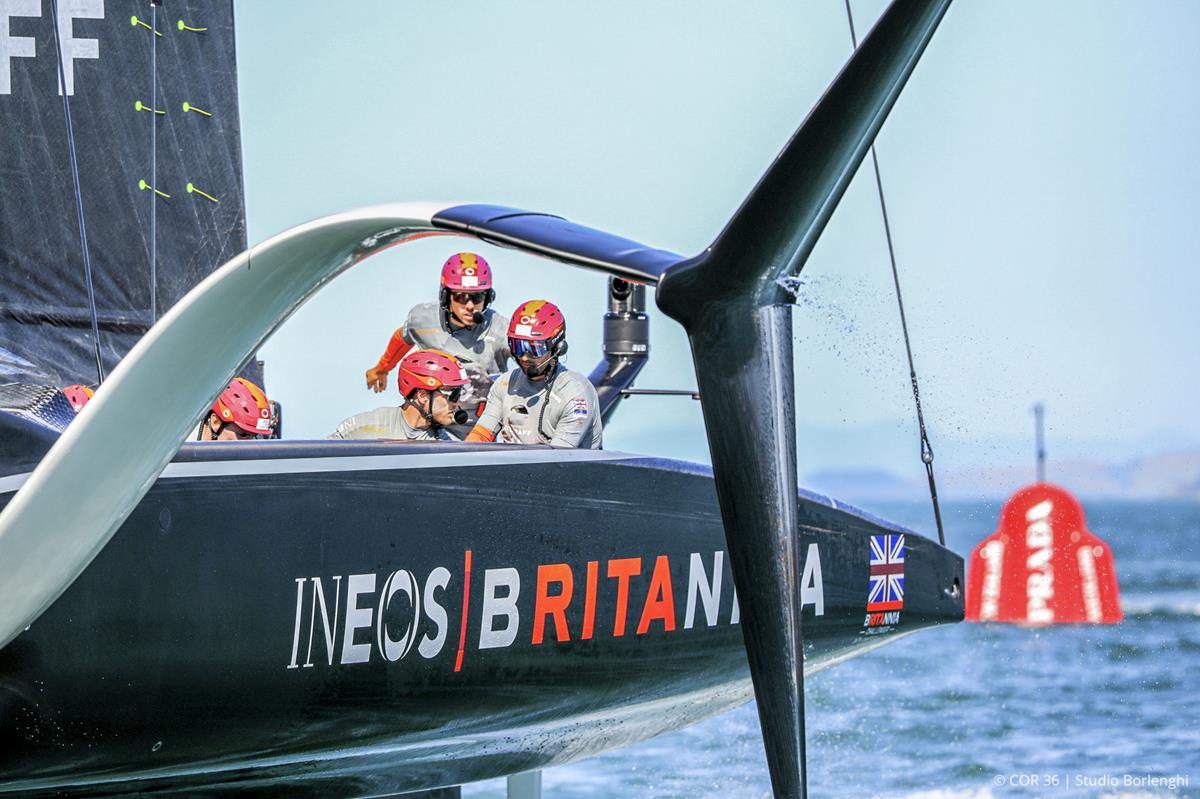
“So we have four receive points installed here in Auckland at multiple sites where we can make sure that we can receive and that we can use all five race boxes live on air at any time” because while the race umpire or officials will define a preferred race box the night before the race, that can change at the last minute as weather conditions evolve. So, they had to ensure that all five race boxes are available all the time, and that if a boat is coming back from race box E or A, the race boxes for the extreme weather conditions (no wind or very strong wind), they also have permanent connection coverage along the way.
“We’re getting these then with point-to-point links, high microwave links, and back into the IBC. One is connected directly because we have a line of sight to one race box, the other two receive points are connected as a relay through the TV Sky Tower here in Auckland and the last received one of course is in our TV compound in the IBC” for pre- and post-race shows and also for covering the boats and teams in the marina.
Wuppertal ROC Helps Overcome COVID-Related Restrictions in Auckland
The gallery at the IBC handles up to 12 cameras from each boat, plus four or five wireless cameras in the event village, two chase boats and two helicopters. In fact, there is only one camera or signal coming in that is connected to a wire — a little lipstick cam in the umpire booth. Everything else comes in wirelessly. The system uses Ericsson PTP (precision time protocol) IP systems, with DTC and Link receivers.
To back up the IBC, there is also a Remote Operations Center in Wuppertal (Germany), although it isn’t used as much now as it was in the lead up to the final, when it did “a lot of backup engineering and additional support, especially at the beginning when we had all four boats in competition, so they were monitoring, for example, data from the boats,” said Puschkeit. Wuppertal also did a lot of remote engineering, such as fine-tuning the remote camera control of the PTZ cameras, because that is where the engineers who designed and developed it were based.
With the link to Wuppertal it had additional engineers and a second pair of eyes monitoring what was happening, which was useful to analyze how its systems integrated into the boat systems, which were not standardized as each team set up its own equipment. It also helped overcome some COVID-related restrictions that delayed travel to Auckland.
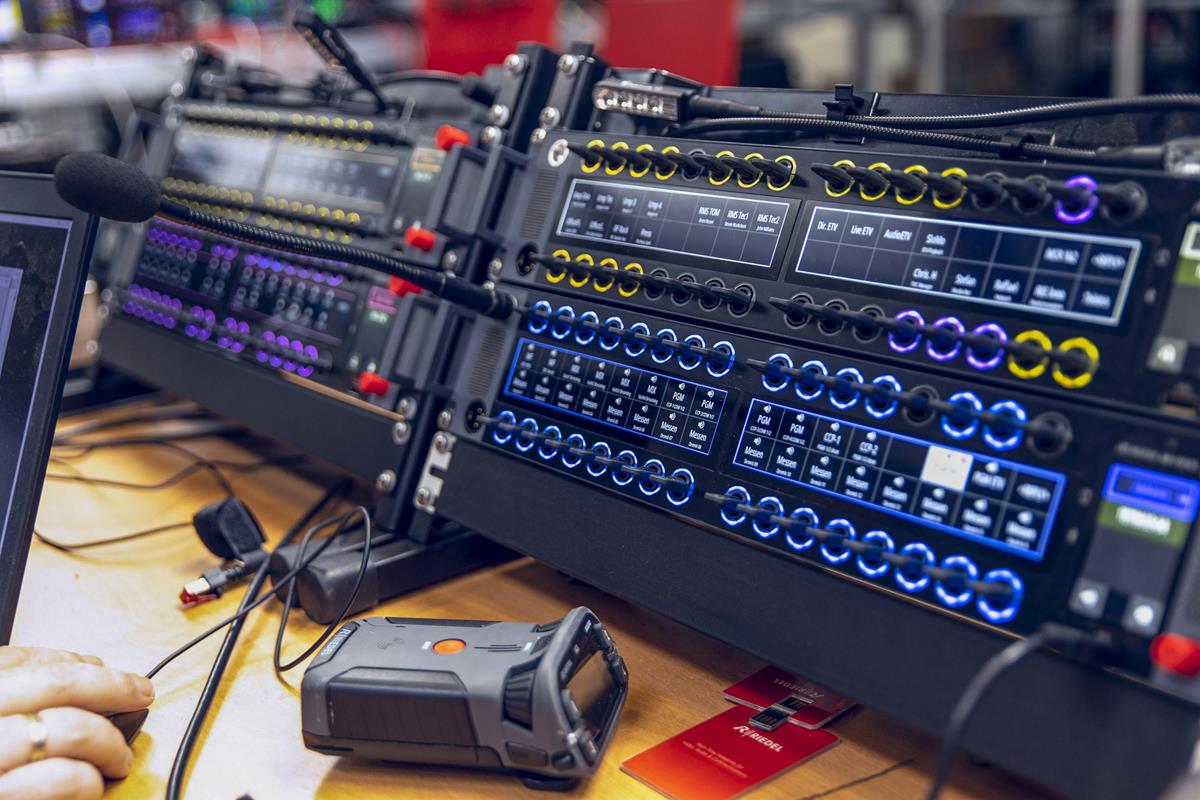
New Zealand-based ARL (Animation Research Ltd) is doing the graphics, as it did on the last cup, but this time Circle-O, Riedel and ARL wanted to develop its own AR systems (moving on from Liveline) so that they could be better integrated with the overall set up — which Eksler believes they have managed.
Back at the IBC there is a fully IP-based set up in the main production gallery under the control of a VSM control system, with a Sony vision mixer, the new Riedel RSP-1232HL intercom smart panel, Skaarhoj remote controllers for the remote camera operators, plus seven SimplyLive slomo servers, all linked together as one platform for live slomo and producing the replay highlights between the races.
They also capture all the footage and stream this to an EditShare server so that post production can grab that footage. There are seven edit suites using Adobe Premiere, which can also provide features on the EditShare that SimplyLive can play out, such as the highlights show or video news releases. “Also from EditShare we can upload the content to our clouds or various social media channels,” said Puschkeit. The IP-based audio gallery is built around a Lawo MC square 56 audio mixer.

